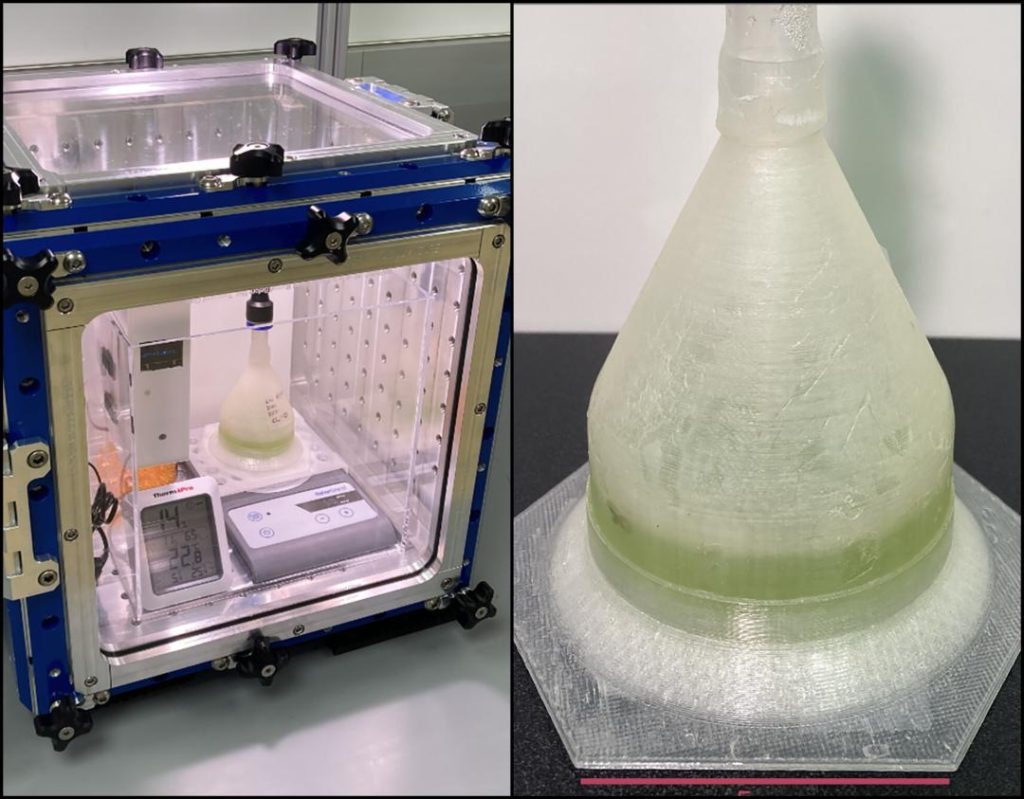
Researchers Grow Green Algae Under Mars-Like Conditions on Earth
In a breakthrough study, researchers at Harvard School of Engineering have successfully grown green algae inside shelters made of bioplastics in Mars-like conditions on Earth. The achievement has significant implications for the possibility of extraterrestrial life and could pave the way for future studies on the red planet.
The study, published in the journal Science Advances, reveals that the researchers were able to replicate the Martian environment on Earth by creating a shelter with a pressure of 600 pascals, which is over 100 times lower than the atmospheric pressure on our planet. The team also simulated the Martian atmosphere by creating a carbon dioxide-rich environment, which is much higher than the levels found on Earth.
The researchers used a type of green algae called Chlamydomonas reinhardtii, which is a common species found in freshwater environments. They grew the algae in the bioplastic shelters and monitored their growth and behavior under the Martian-like conditions.
The results of the study showed that the algae were able to thrive in the Martian environment, growing and multiplying at a rate similar to that found in normal Earth conditions. The algae were able to photosynthesize and produce oxygen, just like they do on Earth, despite the much lower pressure and different atmospheric composition.
The study’s lead author, Dr. Lydia Bourouiba, said that the results of the study are significant because they demonstrate that it is possible to grow life on Earth under conditions similar to those found on Mars. This could open up new possibilities for the search for extraterrestrial life and for the study of the Martian environment.
“This study shows that it is possible to grow life on Earth under Martian conditions, which could be a crucial step towards understanding the possibility of life on Mars,” Dr. Bourouiba said. “It also highlights the importance of studying the Martian environment and the potential for life on the red planet.”
The study is part of a larger research effort to understand the Martian environment and the possibility of life on the planet. NASA and other space agencies are currently planning missions to send humans to Mars in the coming decades, and understanding the Martian environment is crucial for the success of these missions.
The researchers used a combination of bioplastic and biotechnology to create the shelters and simulate the Martian environment. The bioplastic shelters were designed to mimic the conditions found on Mars, including the low pressure and carbon dioxide-rich atmosphere.
The study’s results are significant because they demonstrate that it is possible to grow life on Earth under conditions similar to those found on Mars. This could open up new possibilities for the search for extraterrestrial life and for the study of the Martian environment.
The study’s findings also have implications for the search for life on other planets and moons in our solar system. The study shows that it is possible to grow life on Earth under conditions that are similar to those found on other planets and moons, which could increase the chances of finding life on other celestial bodies.
In conclusion, the study of the researchers at Harvard School of Engineering is a significant breakthrough in the search for extraterrestrial life and the study of the Martian environment. The results of the study demonstrate that it is possible to grow life on Earth under conditions similar to those found on Mars, which could open up new possibilities for the search for life on other planets and moons in our solar system.






